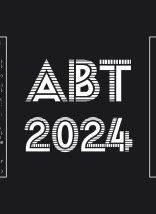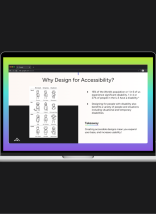Behind every great marketing strategy or successful deployment, there is a vital relationship that doesn’t get much press—the teamwork of the account executive and the project manager. To get an in-depth look at how this relationship works at Atlantic BT, Senior Writer/Content Strategist Allan Maule sat down with AE Townsley Minton and PM Andrea Osborn.
As a project manager or account exec, how would you describe what you do at your job? What are your usual goals?
Andrea (PM): I’m responsible for overall delivery and execution of a project. AEs like Townsley do the project estimate and sell the work, and PMs like me set up the schedule, the deliverables, the workflow, and create the tasks in Mavenlink (our project planning software) using 2 week sprints. On a daily basis, I’m checking the budget, the deliverables, and how well we’re doing at finishing things based on the schedule we created. I also look at how to adjust to ensure that our project gets finished at the level of quality and timing we agreed on.
Townsley (AE): As an AE, I own the relationship with the client. My #1 priority is that we hear their needs and are meeting them. I want to keep clients happy, but I also need to ensure my team at ABT is happy and able to do their job well. Clients can also come to me to vent about any issues they have with the project and with ABT.
Andrea (PM): That works the other way too. As a PM, if I feel stuck with the client, the AE is here to help. She works to ensure communication is clear and smooth throughout the process.
Townsley (AE): YES. Communication is a key part of what I do. That means managing expectations on the client end so they know what to expect and are happy with the work. It also means communicating with the PM so they can understand the client’s fears, goals, deadlines, and other extenuating circumstances.
What are some of the most common hurdles or issues you run into at your job?
Townsley (AE): It’s not always easy to get a client to see the big picture of everything we are trying to accomplish with their projects and all the possibilities of what technology can do for them. They might be hesitant about the first estimate we give them, so I help them understand how the money they spend with ABT will deliver value at each stage in the process.
Andrea (PM): The AEs’ understanding of the client and project set the tone for the entire project. So there’s a lot riding on them getting everything the client wants and aligning it with the reality of what our team can accomplish. I don’t see this problem often with our team at ABT, but hurdles happen when client expectations don’t align with the reality of the project. When they expect something that’s not what they’re getting…
Townsley (AE): …or that we can’t deliver in the timeline they require, it’s a major issue. And that’s a challenge to communicate and handle. I don’t worry about our AEs getting off-the-rails, but it’s important that we have our best communicators be the point people with the clients. Ultimately, miscommunication is the main hurdle an AE can face. We want to do as much as we can with the smallest budget possible, so how do you balance that to set your team up for success and make the client happy? A big part of the answer is recognizing personality conflicts and having a plan to deal with them before they become a problem.
What tensions do you see with personalities on the ABT end and on the client end?
Andrea (PM): Here’s a classic one: The architect provides the estimate, then the developer who actually has to do the work protests that he/she needs more time. Again, this is typically caused by miscommunication. Either the architect didn’t realize the full effort or the developer is misunderstanding what’s required. As the PM, it’s my job to make sure this red flag is raised early so we can address immediately.
Townsley (AE): On the client-facing end, sometimes you have highly technical people try to explain things to clients who don’t have the technical background to keep up with the explanation. This is frustrating to our techs (because they aren’t being understood) and overwhelming to our clients. My favorite solution is to work with my PM to translate technical needs with non technical people.
Andrea (PM): In turn, I usually ask my technical colleagues to show me what they’re talking about rather than just relying on words. People are different, so they explain themselves in different ways.
Townsley (AE): In the same way, no two clients are identical. So it’s really important to approach each client with a fresh slate, listening actively to their ideas and concerns to get a good look at what they need. This is also why it’s great to keep the same clients over the long term so you don’t have to start from scratch each time.
3) How do you work together with project managers/account execs to handle these tensions?
Townsley (AE): I try to work with PMs to understand client’s personalities, such as “They don’t like this wording, they prefer this form of communication and not that form,” etc. I step in when there are delays, budget issues, etc. so the PM doesn’t feel like they’re alone in delivering hard news about the project’s progress. So my relationship with the client is key.
Andrea (PM): When dealing with tensions on a project, my relationship with the AE is vital. We can’t survive without each other. And Townsley’s a great communicator. One client of ours has multiple contacts in their organization whom I work with, and having Townsley to help me work with these contacts’ boss is invaluable.
Townsley (AE): We’re each other’s cheerleader. When I have a difficult call with a client, I can go directly to Andrea and get her encouragement when I’m heading into a tough situation. When I was on maternity leave, I had other AEs to handle client relationships but the PMs were crucial to helping my substitute AE handle these clients effectively. I never would have been able to have the smooth transition to and from maternity leave without the help of my PM.
What advice would you offer PMs or AEs to help them get the AE/PM relationship right?
Andrea (PM): Make sure you HAVE a relationship with them beyond just work. If you’re invested in them as a whole person, you’ll actually care about their success and be able to work with them well.
Townsley (AE): You’ve got to be a team player. If you’re here to make yourself look good, you are going to end up hurting yourself. Bond, dammit! You’ve got to actually care if you want the other person to care about you. That provides a level of trust that makes your job work.
What advice would you offer companies like ABT to help them get the AE/PM relationship right on a structural level?
Townsley (AE): Organizationally, companies want to firmly define roles. But you have to understand that each team will want to manage their projects differently. So you’ve gotta leave room for the gray areas.
Andrea (PM): Don’t let your PMs and AEs work in silos. Make sure there’s crossover. An example: If the AE doesn’t work with the PM on estimates, you’ll run into trouble if the client needs extra feedback or more rounds to define something. The PM or AE’s knowledge of the client is crucial.
Townsley (AE): The AE doesn’t just sell it and be done. I keep in touch the whole time to celebrate wins with the team and the client as they happen. I want to help the client happy, so I keep my finger on the pulse of the project. This doesn’t mean I project manage the project by directing the production team or making choices on how the deliverable should go; it means I stay in touch and make sure the client is being well-represented and find any red flags early so we can communicate about them as soon as possible. Even if it’s just listening, I can hear what the client is reacting to and be ready for it.
Andrea (PM): I wouldn’t want to do what Townsley does. That professional respect for roles and gratitude for what she does helps us work better together by knowing who is going to handle what.
Townsley (AE): We can sub in for each other on individual tasks, but I’d never want to handle her day-to-day over the long term. We can hold each other accountable in a constructive way.








